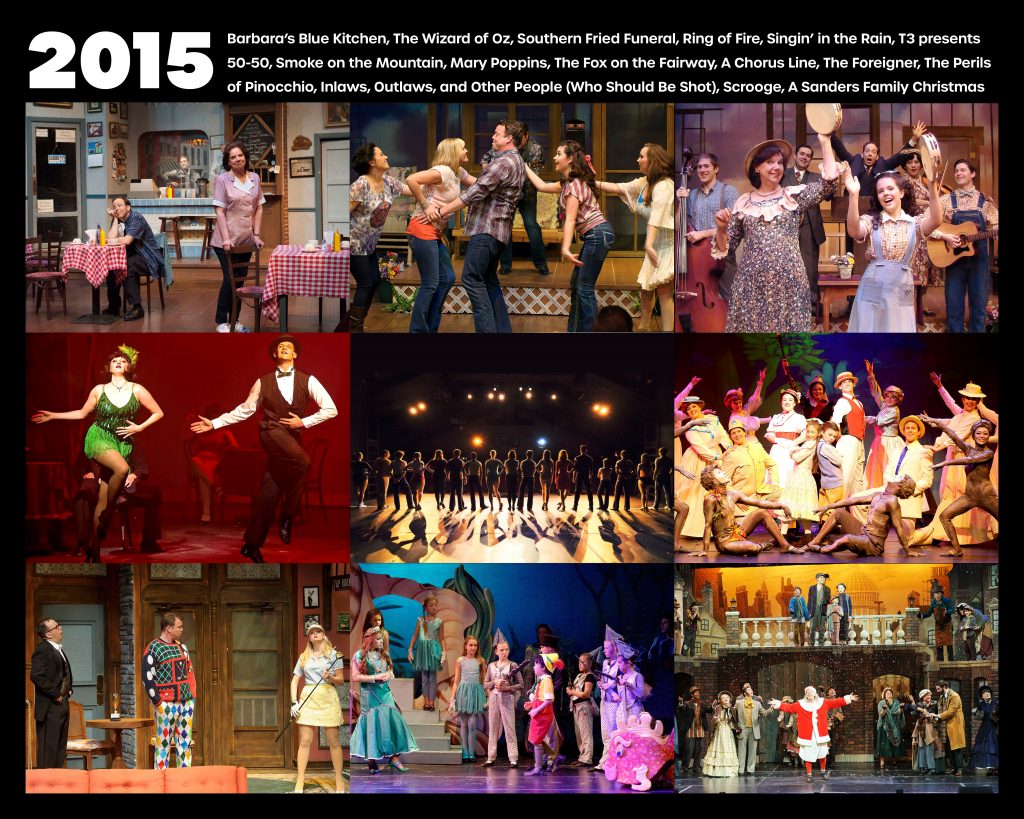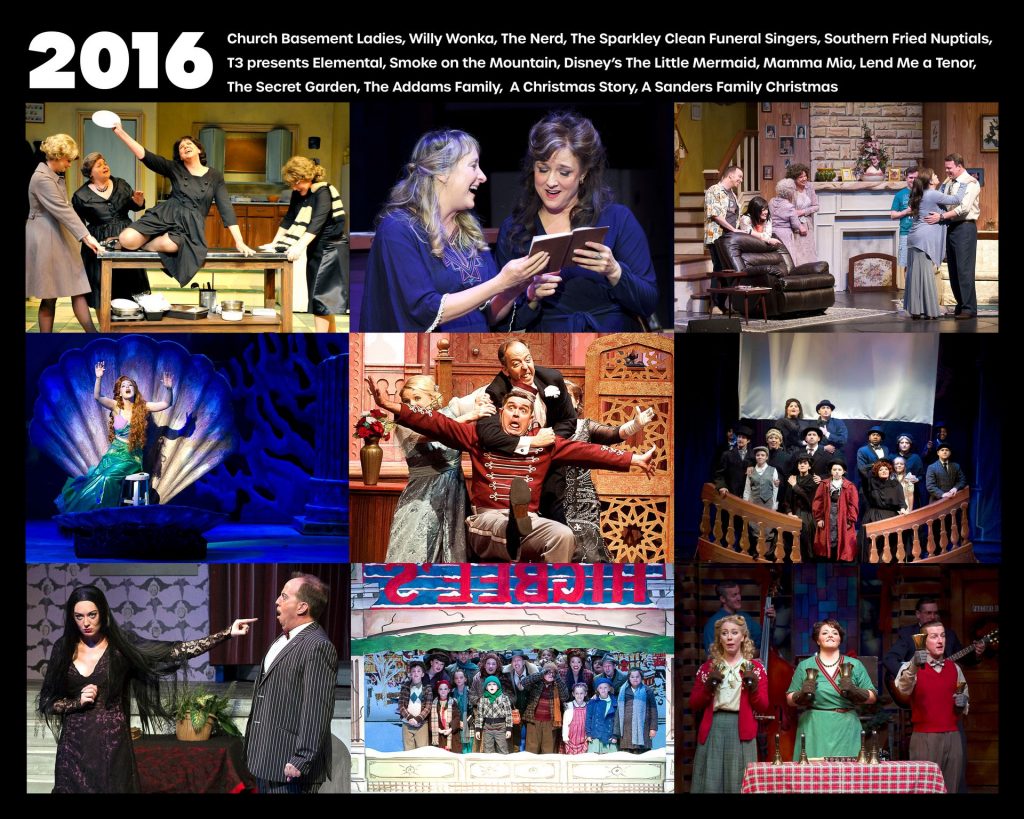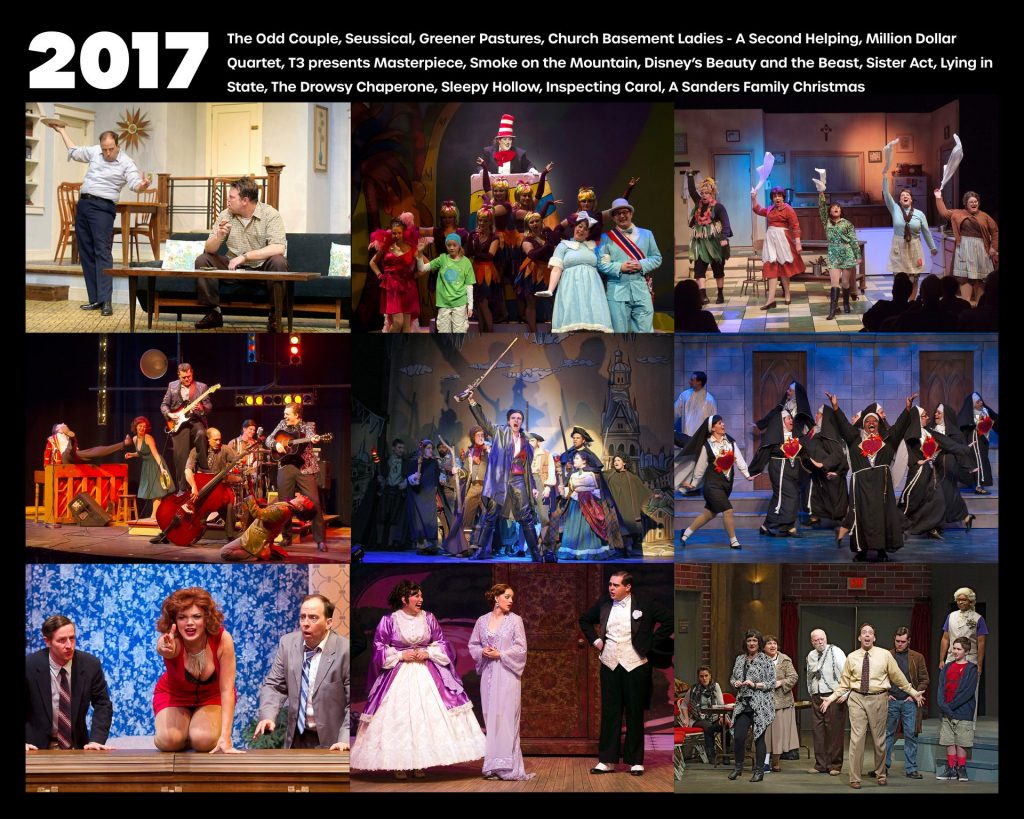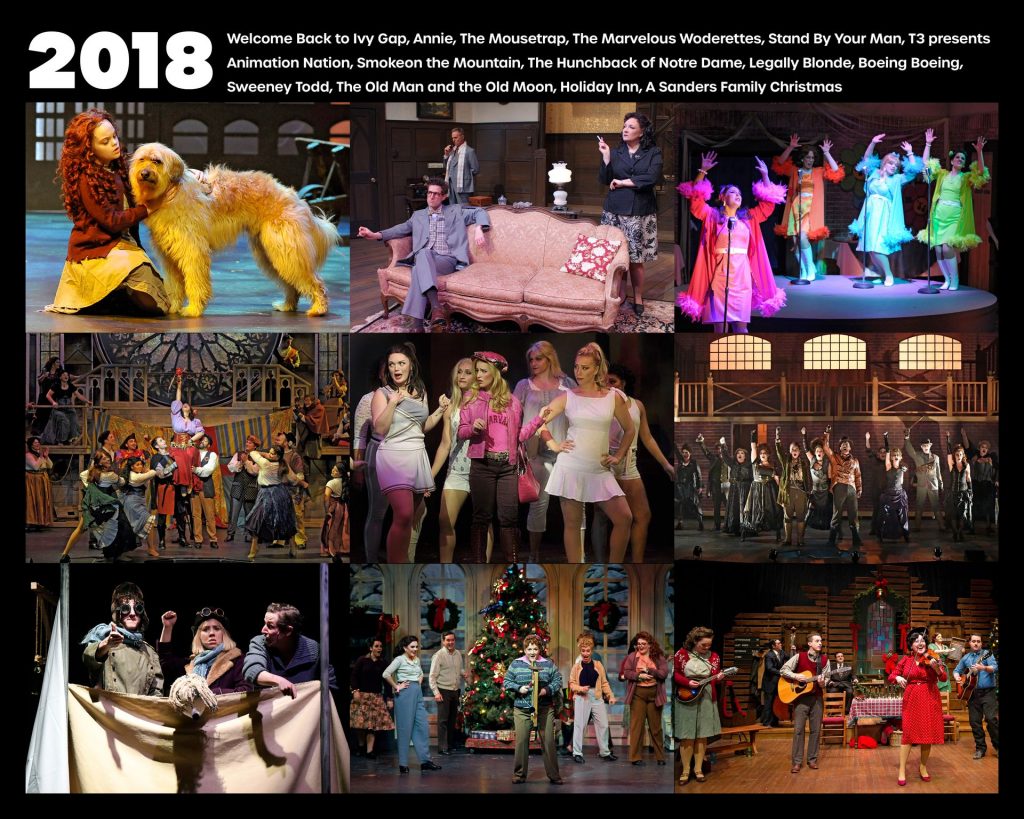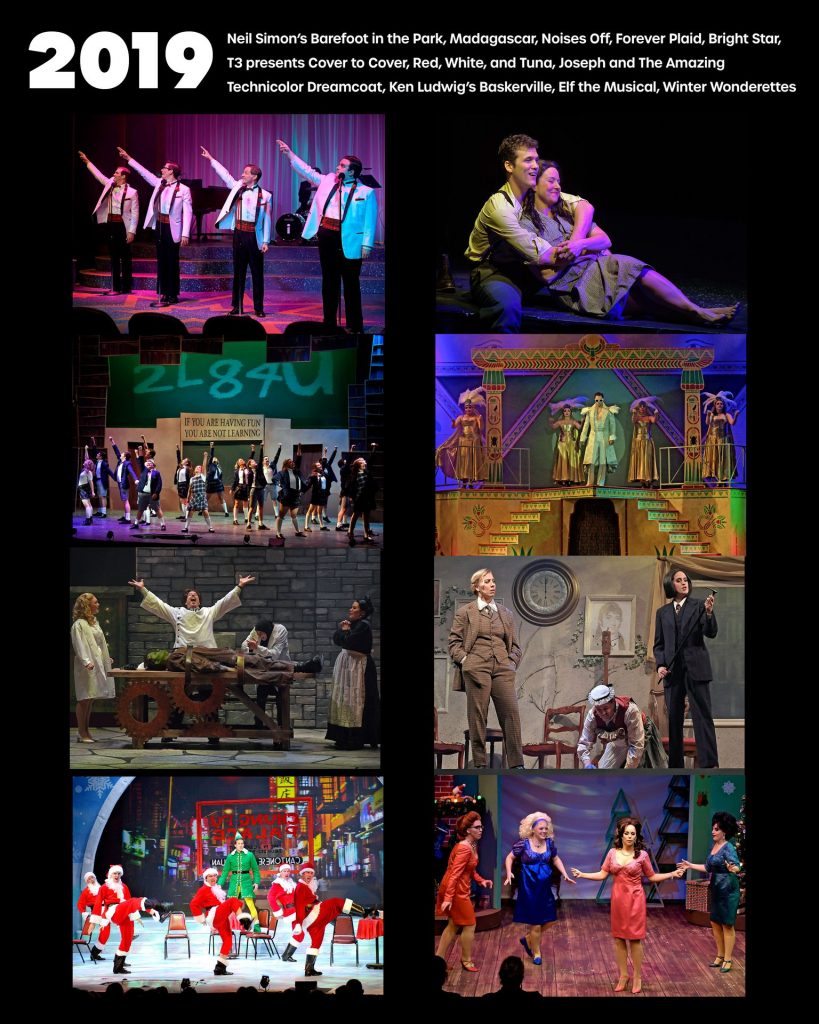HISTORY
 In 1963, Crossville, Tennessee was a town you passed through on the way to other places. Located in Cumberland County, the town and surrounding Appalachian region was economically depressed. Resort and recreational development were in their infancy. High unemployment and poverty were normal. Paul Crabtree was an actor, director, producer and composer. He attended Syracuse University, and made his Broadway debut when he succeeded the role of Will Parker in the original Broadway production of Oklahoma!. He was then given a contract with the Theatre Guild and went on to produce and direct Broadway shows with such legends as Helen Hayes, Charlton Heston, José Ferrer, Geraldine Paige, Loretta Young, E.G. Marshall, and many others.
In 1963, Crossville, Tennessee was a town you passed through on the way to other places. Located in Cumberland County, the town and surrounding Appalachian region was economically depressed. Resort and recreational development were in their infancy. High unemployment and poverty were normal. Paul Crabtree was an actor, director, producer and composer. He attended Syracuse University, and made his Broadway debut when he succeeded the role of Will Parker in the original Broadway production of Oklahoma!. He was then given a contract with the Theatre Guild and went on to produce and direct Broadway shows with such legends as Helen Hayes, Charlton Heston, José Ferrer, Geraldine Paige, Loretta Young, E.G. Marshall, and many others.
 Mary Crabtree spent her youth in Pittsburgh and Crossville before moving to New York. It was there, in 1941, that she met Paul in the National Company of George Abbott’s Kiss & Tell. They fell in a love and were married. Mary balanced her acting and modeling career with motherhood, while Paul directed for The Theater Guild. Later, after writing stints for television shows such as The Loretta Young Show, the family took a sabbatical in Crossville where Mary had family. This was a to give Paul some time to write his book, Stories from Doby Creek, and the more important matter at hand, what to do next career-wise that would be best for the family. While in Crossville, community leaders approached Paul about staging a show for the local school-aged children, and a dream was born. In December of that year, Paul Crabtree’s The Perils of Pinocchio was presented at the Crossville Junior High School with a cast, crew, and orchestra of 200 youngsters. The performance electrified the community.
Mary Crabtree spent her youth in Pittsburgh and Crossville before moving to New York. It was there, in 1941, that she met Paul in the National Company of George Abbott’s Kiss & Tell. They fell in a love and were married. Mary balanced her acting and modeling career with motherhood, while Paul directed for The Theater Guild. Later, after writing stints for television shows such as The Loretta Young Show, the family took a sabbatical in Crossville where Mary had family. This was a to give Paul some time to write his book, Stories from Doby Creek, and the more important matter at hand, what to do next career-wise that would be best for the family. While in Crossville, community leaders approached Paul about staging a show for the local school-aged children, and a dream was born. In December of that year, Paul Crabtree’s The Perils of Pinocchio was presented at the Crossville Junior High School with a cast, crew, and orchestra of 200 youngsters. The performance electrified the community.
To a community with no museums, no college or university, no live performance organizations, just one movie theater and a ninety-minute drive to the nearest city, the idea was extremely compelling that Pinocchio might be the beginning of new educational horizons for their children. Civic and cultural leaders asked Crabtree how they could keep things like – happening in Crossville. “Well, you’d have to build a theater,” he replied. “The old junior high auditorium isn’t even safe.”
Remarkably, in a town of 5,000, in a county of 25,000, that’s exactly what they did. The entire community got behind the idea of the Playhouse because people believed it could make a vital contribution to education and the local economy and help create some new jobs. The Cumberland County Playhouse is now the only major non-profit professional performing arts resource in rural Tennessee, and one of the 10 largest professional theaters in rural America. It serves more than 145,000 visitors annually with two indoor stages, an outdoor venue, Theater for Young Audiences productions, a comprehensive education program, and a concert series.
Combining a resident professional company and a fulltime staff with more than 100 visiting professionals, guest artists, and a large volunteer corps, the Playhouse draws professionals from across the country and volunteers from a dozen Tennessee counties. Until recently, The Playhouse was managed and directed by two generations of the Crabtree family since 1965 including long-time Producing Director Jim Crabtree, former Resident Music Director Ann Crabtree, and former Artistic Director Abigail Crabtree. In 2016, after Mr. Crabtree’s retirement, Bryce McDonald became the Producing Director/CEO with Britt Hancock as Artistic Director and Weslie Webster as Education Director.
In 1963, Crossville, Tennessee was a town you passed through on the way to other places. Located in Cumberland County, the town and surrounding Appalachian region was economically depressed. Resort and recreational development was in its infancy. High unemployment and poverty was normal.

Paul Crabtree was an actor, director, producer and composer. He attended Syracuse University, and made his Broadway debut when he succeeded the role of Will Parker in the original Broadway production of Oklahoma.
He was then given a contract with the Theatre Guild, and went on to produce and direct Broadway shows with such legends as Helen Hayes, Charlton Heston, José Ferrer, Geraldine Paige, Loretta Young, E.G. Marshall and many others.

Mary Crabtree, spent her youth in Pittsburgh and Crossville before moving to New York. It was there, in 1941, that she met Paul in the National Company of George Abbott’s Kiss & Tell.
They fell in a love and were married. Mary balanced her acting and modeling career with motherhood, while Paul directed for The Theater Guild. Later, after writing stints for television shows such as The Loretta Young Show, the family took a sabbatical in Crossville where Mary had family. This was a to give Paul some time to write his book, Stories from Doby Creek, and the more important matter at hand, what to do next career-wise that would be best for the family.
While in Crossville, community leaders approached Paul about staging a show for the local school-aged children, and a dream was born.
In December of that year, Paul Crabtree’s The Perils of Pinocchio was presented at the Crossville Junior High School with a cast, crew and orchestra of 200 youngsters.
The performance electrified the community. To a community with no museums, no college or university, no live performance organizations, just one movie theater and an ninety-minute drive to the nearest city, the idea was extremely compelling that Pinocchio might be the beginning of new educational horizons for their children.
Civic and cultural leaders asked Crabtree how they could keep things like – happening in Crossville.
“Well, you’d have to build a theater,” he replied. “The old junior high auditorium isn’t even safe.”
Remarkably, in a town of 5,000, in a county of 25,000, that’s exactly what they did. The entire community got behind the idea of the Playhouse because people believed it could make a vital contribution to education and the local economy and help create some new jobs.
The Cumberland County Playhouse is now the only major non-profit professional performing arts resource in rural Tennessee, and one of the 10 largest professional theaters in rural America. It serves more than 145,000 visitors annually with two indoor and two outdoor stages, young audience productions, a comprehensive dance program, a concert series and touring shows.

